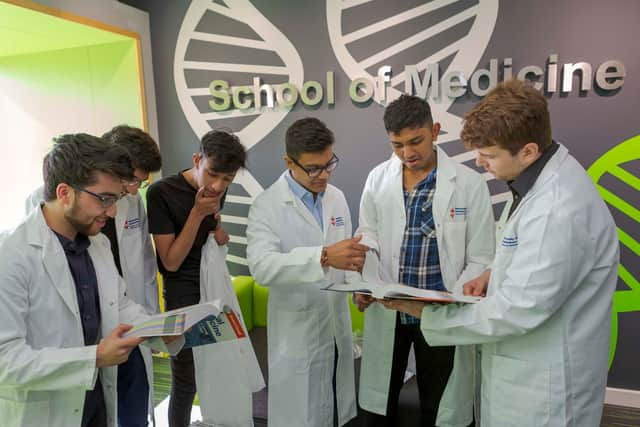University of Sunderland doing its bit to train more medics and drive down record NHS waiting lists
and live on Freeview channel 276
The city's university is supporting the NHS in its campaign to recruit more medical staff, drive down waiting times and return the service to a healthy state for future generations.
The most recently published Government figures show NHS waiting lists are at an all time high with 7.8m patients currently waiting to begin treatment, including the service failing to hit targets for cancer referrals.
Advertisement
Hide AdAdvertisement
Hide AdWhile the Government has cited the residual impact of strike action, figures published this autumn showed nearly 10% of the NHS's planned workforce was unfilled - a record high.
To help rectify the chronic situation, the NHS has launched its Longterm Workforce Plan.
Described as the "biggest recruitment drive in health service history", the plan aims to "put staffing on a sustainable footing and improving patient care by focusing on retaining existing talent and making the best use of new technology".


To help the NHS meet its objectives, Universities UK (UUK) has set out a five point plan which has been given the full backing of the city's university.
Advertisement
Hide AdAdvertisement
Hide AdThe plan includes boosting student recruitment in medical professions, increasing the numbers of educators at which people can train, investing in new facilities, infrastructure and new technologies, and increasing professional placement opportunities for students.
Another aim is to "improve learner experiences" to make medical profession courses more appealing.
The University of Sunderland has already thrown its full support behind the initiative with plans having been submitted to the Government to increase the size of its medical school.
Instead of recruiting 100 new medical students each year, the University will be aiming to recruit 300, meaning the size of the School of Medicine would grow to 1,500 students by early next decade.
Advertisement
Hide AdAdvertisement
Hide AdA further £20m of investment is also planned to further develop the School of Medicine and "ensure that students are taught in some of the best facilities in the country".
Professor Laura Stroud, Pro Vice-Chancellor and Dean of Health Sciences and Wellbeing at the University, said: “At Sunderland we are committed to play our part in rising to the challenges before us.
"Our staff have the enthusiasm and expertise to inspire future generations of health and social care professionals and we have already signalled our intent to triple our intake into Medicine and to harness innovation opportunities across all the healthcare professions we train.


“From paramedicine to sports and exercise physiology, we have the superb facilities and multi-disciplinary teams to enable and challenge us to think creatively about population and healthcare needs and crucially, what we might do differently to support the workforce and training agenda.”
Advertisement
Hide AdAdvertisement
Hide AdA key aim for the university is to retain medical graduates in the city and wider North east region.
Vice-Chancellor Sir David Bell said: “Taking our medical school as an example, expanding it will enable more opportunities for students from Sunderland and the north-east to train as doctors, given that they are scandalously underrepresented presently in the overall UK medical school numbers.
"We want similar opportunities to be available for all future healthcare professionals.”
In March this year, there were 112,000 vacancies across the health workforce.
Advertisement
Hide AdAdvertisement
Hide AdUnder the Longterm Workforce Plan, the aim is to ramp up training and double medical school places nationally from 7,500 to 15,000 students, each year, by 2031.
It also aims to increase nursing, midwifery and allied health training places to 72,400 by the same time.
Professor Alistair Fitt, Universities UK’s health policy lead, and Vice-Chancellor of Oxford Brookes University, said: “With political consensus on the need to significantly increase the number of healthcare professionals over the coming years, now is a pivotal moment to protect the future of the NHS in England.
“To develop a well-staffed and efficient NHS, the UK Government must work closely with universities to fund the plan over the next 15 years, spanning general elections and spending reviews.
"We must take bold decisions to ensure the conditions are right for universities to train staff adequately, including on funding and capital investment, staffing and student recruitment.”
Comment Guidelines
National World encourages reader discussion on our stories. User feedback, insights and back-and-forth exchanges add a rich layer of context to reporting. Please review our Community Guidelines before commenting.